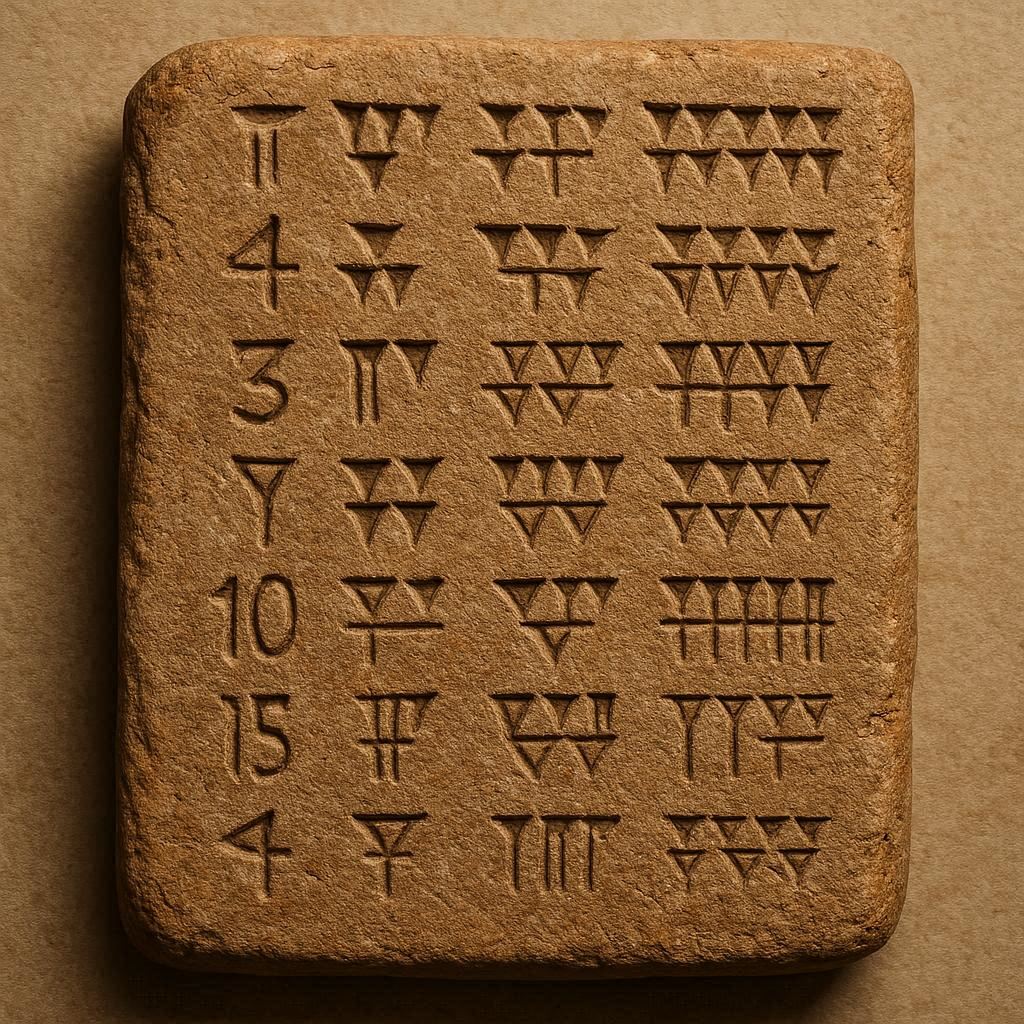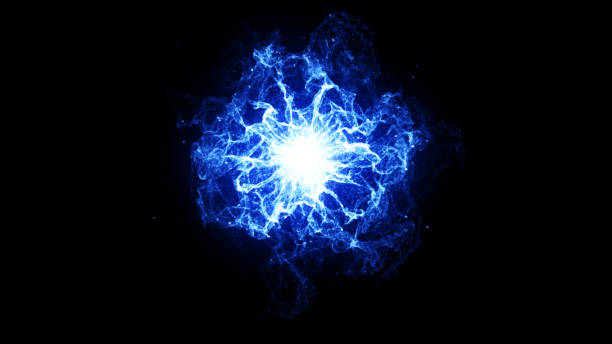Numbers are everywhere—etched into the rhythms of nature, woven into the fabric of the cosmos, and embedded in the stories of human thought. From the simple act of counting to the most sophisticated theories of physics, numbers form the silent code that explains reality. Yet within this infinite landscape of quantities, some numbers stand apart, radiating mystery, beauty, and a sense of the uncanny. These are not just symbols scratched on paper; they are profound ideas that defy intuition, numbers that whisper secrets about the universe itself.
The story of mathematics is, in many ways, the story of humankind’s relationship with mystery. Ancient civilizations stared at the night sky, carved patterns into stone, and sought harmony in music. Behind every pattern they found, numbers lurked like shadows of truth. Among them, certain numbers seemed to appear everywhere—sometimes in geometry, sometimes in physics, sometimes in the beating of a heart or the spiral of a shell. They refused to stay confined, slipping between disciplines, always hinting at something deeper. These are the mysterious numbers that both terrify and fascinate mathematicians.
To explore them is not only to explore mathematics but also to enter a realm where logic meets wonder, where the abstract becomes almost divine. Each mysterious number carries a story—a narrative of discovery, struggle, and revelation. They connect the human mind to the hidden structures of existence. And they remind us that numbers are not mere tools; they are living mysteries.
The Enigma of Zero
At first glance, zero seems harmless, even trivial—a placeholder, a nothing. Yet behind that nothing lies one of the most revolutionary concepts in human history. Ancient cultures like the Babylonians and Mayans toyed with the idea, but it was in India that zero as both a symbol and a concept was fully born. From there, it spread to the Islamic world and eventually into Europe, transforming mathematics forever.
Zero is absence, yet it allows us to represent infinity. It divides the positive from the negative, marking the threshold between existence and non-existence. Without zero, modern arithmetic, algebra, and calculus would collapse. Computers, which encode information in zeros and ones, owe their very being to this void.
But zero is not just a practical tool—it is a philosophical riddle. What does it mean to represent nothing? Can nothingness be something? When you divide by zero, mathematics shatters into paradox. Physicists confront similar paradoxes when black holes tear the fabric of space-time, leading equations to “infinities” that resemble dividing by zero. Zero is the emptiness that creates possibility. It is silence, yet within silence, the potential for every sound.
The Infinite Horizon
If zero is the abyss, infinity is the endless sky. Infinity is not a number in the ordinary sense but a concept that stretches the human mind beyond comfort. The Greeks wrestled with it, with Zeno’s paradoxes showing the contradictions of dividing motion into infinite steps. For centuries, mathematicians avoided infinity, treating it as a dangerous illusion.
Then came Georg Cantor in the nineteenth century, who dared to tame infinity with mathematics. Cantor revealed that there are infinities of different sizes—an infinite ladder of infinities, each larger than the last. The infinity of whole numbers is vast, but the infinity of real numbers is vaster still. Cantor’s discoveries were breathtaking and unsettling. They challenged not only mathematics but also philosophy and theology. For daring to explore the infinite, Cantor faced ridicule and despair, but he also opened doors that changed the foundations of mathematics forever.
Infinity is everywhere—in the endless decimals of irrational numbers, in the unbounded universe, in the fractals that repeat forever in ever-smaller scales. Yet it resists full comprehension. To think of infinity is to stand at the edge of human thought and gaze into the immeasurable. It is the number that is not a number, a mystery that expands without end.
Pi: The Circle’s Secret
Among the most famous of mysterious numbers is π (pi), the ratio of a circle’s circumference to its diameter. Known to ancient civilizations, approximated by Egyptians and Babylonians, worshiped by mathematicians, pi is more than a geometric constant—it is a window into infinity.
Pi is irrational, meaning it cannot be expressed as a simple fraction. Its decimal expansion goes on forever without repeating. No matter how many digits we compute—trillions at this point—it never resolves into a pattern. And yet, pi appears everywhere. It governs the geometry of circles, yes, but also the behavior of waves, the probabilities of statistics, the distribution of prime numbers, even the physics of the cosmos.
For centuries, mathematicians obsessed over calculating pi with greater precision, from Archimedes’ polygons to modern supercomputers. But the fascination is not merely numerical—it is symbolic. Pi is both familiar and unknowable, intimate yet infinite. A child can measure it with a string around a jar, yet the universe cannot contain all its digits. It is the number that whispers: perfection lies beyond reach.
Euler’s Number and the Breath of Growth
Another mysterious constant is e, known as Euler’s number, approximately 2.71828. At first glance, e may seem less glamorous than pi, but in truth, it governs the dynamics of life itself.
e arises whenever growth unfolds—whether in populations, investments, or radioactive decay. It represents continuous growth, the smooth unfolding of change in time. Imagine bacteria doubling, interest compounding, or heat diffusing—behind them all is e. In calculus, it forms the base of natural logarithms, binding the exponential and logarithmic worlds together.
What makes e mysterious is not just its ubiquity but its beauty. It emerges from seemingly unrelated realms: probability, geometry, physics, and pure mathematics. It unites the discrete and the continuous, the random and the deterministic. And it achieves its most dazzling form in Euler’s identity:
eiπ + 1 = 0
Here, in one compact equation, five of mathematics’ most fundamental numbers—0, 1, π, e, and i—meet in perfect harmony. Many call this the most beautiful equation ever written, a glimpse of the divine symmetry hidden in numbers.
The Imaginary Path
Not all numbers are visible on the number line. Some exist in a shadowy dimension of thought. Among them is the square root of -1, denoted i. At first, this idea seems absurd. After all, no real number squared gives -1. For centuries, mathematicians avoided it, dismissing such “imaginary numbers” as meaningless.
Yet as algebra grew, these strange numbers proved indispensable. They extended the number system, allowing equations to be solved that otherwise had no solution. With i, the complex numbers were born, blending real and imaginary into a richer continuum.
What began as an impossibility turned into a powerful tool. Complex numbers underpin modern physics, quantum mechanics, and electrical engineering. They describe waves of light and particles of matter. They allow engineers to design circuits, mathematicians to map fractals, and scientists to probe the mysteries of the atom.
The imaginary became real. The impossible became indispensable. The square root of -1 stands as a reminder that mathematics often reveals truths stranger than imagination.
The Golden Ratio: Nature’s Hidden Code
Few numbers have captured the imagination of artists, architects, and mystics as much as the Golden Ratio, denoted by the Greek letter φ (phi), approximately 1.61803. This number arises when a line is divided into two parts such that the ratio of the whole to the larger part equals the ratio of the larger part to the smaller.
The Golden Ratio is celebrated as a symbol of harmony and beauty. Ancient architects built temples with proportions echoing φ. Renaissance painters embedded it in their compositions. Designers and mathematicians alike marvel at its elegance. But the fascination with φ goes beyond human art—it appears throughout nature.
The spirals of shells, the branching of trees, the arrangement of leaves, the proportions of hurricanes and galaxies—all reveal traces of the Golden Ratio. It is linked to the Fibonacci sequence, where each number is the sum of the two before it. As the sequence unfolds, the ratio of successive terms approaches φ. This mysterious convergence connects arithmetic to geometry, growth to form, mathematics to life.
Yet like all mysterious numbers, φ carries paradox. Is its presence in art and nature coincidence, or does it reveal a deeper law of beauty? Is the Golden Ratio a human projection, or does it whisper of universal design? The mystery endures, making φ not only a number but a symbol of the connection between mathematics and the aesthetic soul.
Prime Numbers: The Lonely Guardians
Among integers, prime numbers stand apart. These are the indivisible numbers, divisible only by themselves and one. To the ancients, primes were the atoms of arithmetic, the building blocks of all numbers. Their distribution, however, is hauntingly unpredictable.
Primes thin out as numbers grow larger, but they never vanish. No formula can predict them with certainty, yet they follow mysterious patterns. The Riemann Hypothesis, one of the greatest unsolved problems in mathematics, seeks to uncover the secret rhythm behind their distribution. Its resolution may reshape not only mathematics but also fields like cryptography that rely on primes for security.
Primes are at once simple and unfathomable. They are lonely sentinels scattered along the number line, guardians of mystery. Their unpredictability challenges the human craving for order, reminding us that within mathematics, as in life, some truths remain just beyond reach.
The Transcendentals
Beyond rationals, beyond algebraic roots, there exists another category of numbers—the transcendental numbers. These are numbers that cannot be the solution to any polynomial equation with integer coefficients. Pi and e are transcendental, but they are not alone. In fact, most numbers are transcendental, though we can rarely name them.
The very existence of transcendental numbers was a shocking revelation of the nineteenth century. They embody the unreachable, the unnameable, the infinite beyond infinity. To grasp them is impossible, yet their presence ensures that the number line is richer than any human imagination. They are the ghosts of mathematics—real, but forever untamed.
The Mystery That Remains
Numbers are not only tools of calculation but also windows into the profound. Zero speaks of nothingness, infinity of endlessness. Pi circles eternity, e breathes life into growth, i opens the door to the impossible, φ binds beauty to form, and primes guard the gates of arithmetic. Each mysterious number challenges our perception of reality and reminds us that mathematics is not a cold machine but a living mystery.
The deeper we dive, the more numbers reveal their strange connections, their hidden harmonies, and their shadows of paradox. They are at once human inventions and eternal truths, discovered rather than created, whispering from the fabric of the universe.
To encounter these numbers is to stand at the boundary between reason and wonder. They are riddles without final answers, echoes of infinity in a finite world. They remind us that even in the most precise of sciences, mystery endures. And perhaps that is the ultimate lesson of mathematics—that truth is not only in solutions but in the endless beauty of questions.






